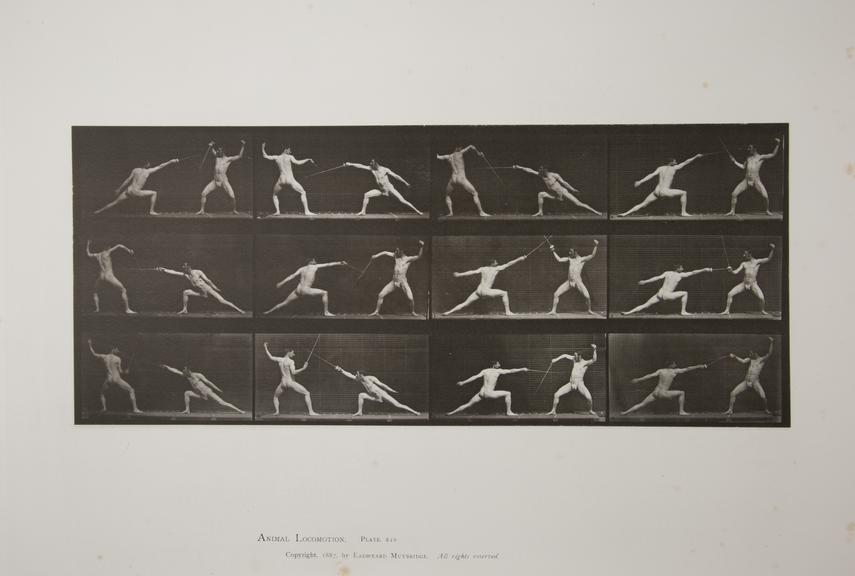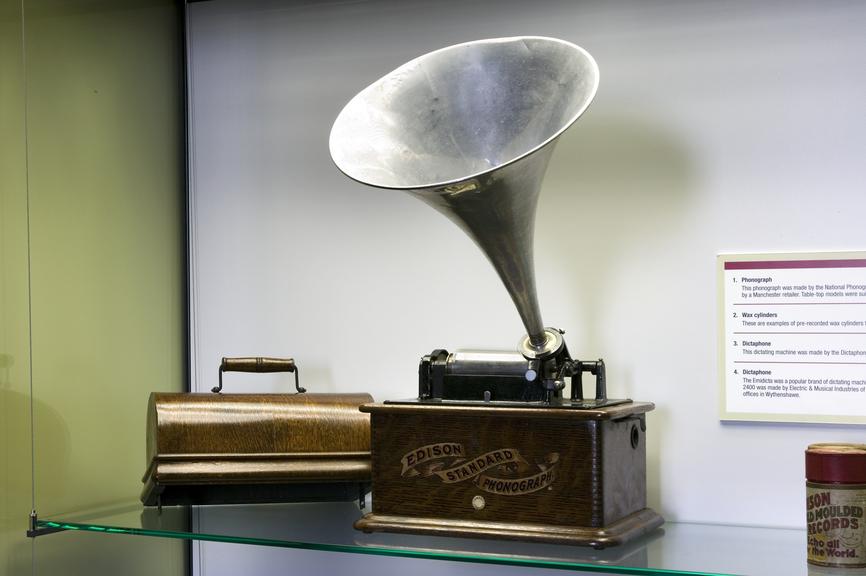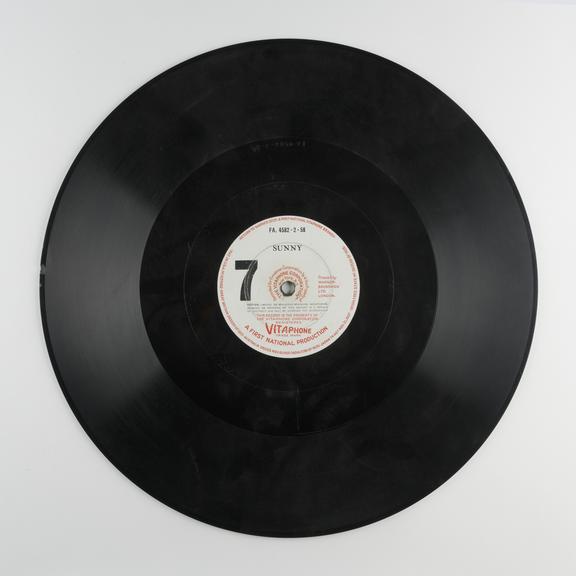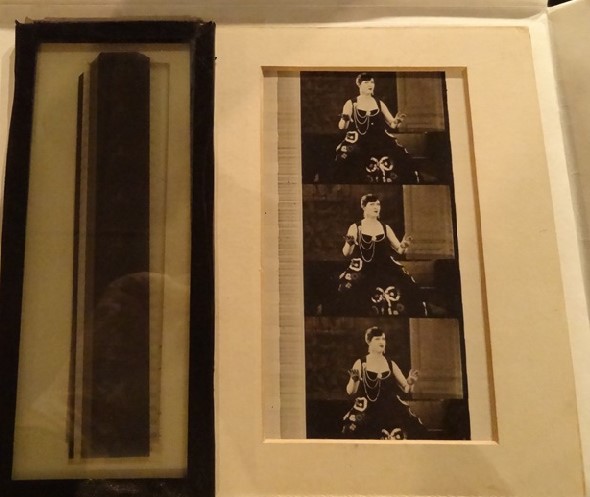Many of us are familiar with the sight of pianists and even entire orchestras at film screenings of the ‘silent era’ (1894–1927) that look so alien when compared to cinema technology today. But how did sound in cinema evolve from the sometimes-peculiar era of silent films to what we know today? In this post we will take you on a whistle-stop tour of the story of sound in film.
Muybridge and Edison
When attending a lecture utilising Eadweard Muybridge’s Zoopraxiscope, Thomas Edison began pondering the idea of sound and film. You may be familiar with this Zoopraxiscope, a method of projection which allowed Muybridge and others to study complex and difficult to observe actions, like a horse running, fencing, dancing, or boxing.
Muybridge’s experiments in moving images inspired Edison to consider marrying moving images with his existing phonogram sound technology. This technology, with its limited amplification of sound, provided more immersive audio experiences for a single viewer. But this was far from synchronisation as we know today.


By 1894, Edison—inspired by Muybridge’s early successes—had placed much faith in his Kinetoscope. This was a personal viewing device that used a series of pulleys and gears to pull longer strips of film before a viewing port. And, while you won’t likely see this on MTV, below is the only surviving footage of possibly the first-ever music video utilising a phonograph mechanism, allowing for the playback of sound in time with moving images.
The Vitaphone

Later patents, such as the Vitaphone used by Warner Bros., would enter into people’s lives in the 1920s. The Vitaphone system was produced alongside Bell Telephone Company and Western Electric to gain a monopoly over film and sound technology in America. Expensive equipping costs for both industry and cinemas saw an initial rejection of this next great leap. But when sound burst into cinemas with the likes of Don Juan in 1926 and The Jazz Singer in 1927, it became clear the technology was here to stay.
However, even these bombshell productions were at times hemmed in by still having sound recorded onto a shellac disc that could only store five minutes at a time. This stifled the creative freedom of film-makers significantly; even technologically groundbreaking films like The Jazz Singer still contained many silent speech intertitles.
Sound on film
Eventually, derivatives from outside Edison’s grasp and inspired by the shortcomings of the Vitaphone system emerged. This came in many forms such as the Fox-owned Movietone (1927) and RCA’s Photophone (1927).

After much corporate espionage, personal competition, and sabotage to rival the greatest spy novels, the two systems were agreed upon as a standard for all the major American film studios. Europe would standardise on Tobis-Klangfilm and Tri-Ergon systems. This finally saw the leap to sound synchronisation on the physical film reels itself, as seen in the rare example of preserved Photophone film strips shown above.
This technology allowed for fluidity in film once again. From here, more complex and epic films emerged, such as King Kong in 1933.

The 1940s–50s: The television threat and multi-track sound
Early combinations of sound and projection technology existed in the 1930s, and by the 1940s, the issue of capturing sound synchronised footage onto film had been widely solved. By the late 1940s, this technology was widespread to the point that production could exist around the country. An example is the Gaumont-Kalee GK21 35mm cinema projector pictured to the right: manufactured by the Leeds-based company A Kershaw and Sons Ltd, it is now on display in Pictureville Bar at the National Science and Media Museum.
In the same period, however, the threat of TV emerged, and audiences needed to be stunned into going to the cinema. In terms of sound technology, this meant surround sound would again throw standardisation into disarray as the widening of screen aspect ratios called for more epic audio. One of the most popular processes, Cinerama, utilised a complex system of seven audio channels.

As screen sizes increased, so too did the need for deeper soundscapes. However, with this came a strange throwback to the earliest cinemas, in which a small army of personnel was needed in the theatre itself. Projectionists, sound controllers and engineers of all calibres were needed to bring widescreen and surround sound to life.
So, audiences were treated to epics like The Wizard of Oz as early as 1939 and the first Star Wars film as late as 1977. However, in this period of expanding auditory spectacle, those behind the scenes scrambled for standardisation amid a spiralling technological web. This is where Ray Dolby enters the story.
Dolby and the future
In 1938, the ‘Academy curve’ offered a crude solution to the question of how to standardise sound technology in cinemas. This is a method of chopping off the highs and lows of soundwave frequencies so that almost any cinema could project sound alongside film consistently. For many countries still struggling to bring film to rural areas, this technology was a miracle, allowing audio immersion only dreamt of before. But Ray Dolby knew better was possible.

In 1966, the noise reduction system Dolby A became standard in the recording industry. It eliminated the hissing sound that came with earlier standardisation efforts. This was achieved by having four channels all pressed onto the film strips themselves, which not only allowed more flexibility in the editing suite but also meant fewer people were needed on site to operate the technology.
From here, Dolby improved on the system to bring about Dolby Stereo, a revolutionary surround system of compression that allowed cinema designers to consider the acoustics of any given theatre. When Star Wars premiered in 1977, audiences in local village cinemas could enjoy a comparable audio experience to that of their big city counterparts.
But what next? Will the pandemic push personal viewing and virtual reality sales, further forcing audio engineers to create more intricate technology to meet demands? Will this spell out a decline in shared viewing, making audio on a grand scale a smaller part of our lives?
Nothing is certain, but what can be said is that artificial intelligence and remastered audio seem to have combined with a keen interest in nostalgia to bring about new editing possibilities in audio from home. So perhaps here lies the next great leap in sound in film.
Further reading and sources
- A very short history of cinema, National Science and Media Museum
- Science Museum Group Collection
- Scott Eyman, The Speed of Sound: Hollywood and the Talkie Revolution 1926–1930, 2009
- Michael Hammond, ‘The Battle of the Somme (1916): An Industrial Process Film that ‘Wounds the Heart’’, British Silent Cinema and the Great War, 2011, p19–38
- David Sonnenschein, Sound Design: The Expressive Power of Music, Voice and Sound Effects in Cinema, 2001
No mention of EMI’s Alan Blumlein? His “Train At Hayes” stereo sound film from 1935 is available on YouTube for those with an interest.
swaws, but not enough bears
Thank you for presenting this lively synopsis. However, I believe there is an error in your presentation, namely the film strip illustrated and described as “Photophone” is actually the rival variable density track system pioneered by William Fox and Theodore Case, called “Movietone.” The variable density system was quickly “adopted” by Western Electric. Also, you described Ray Dolby’s attempt to reduce optical film hiss by “having all four channels pressed onto the film strip themselves.” This is probably a linguistic error, as you do cite Dolby A as the first of his noise reduction schemes. The “folding” process did NOT reduce noise, but allowed multichannel reproduction on an optical sound track, which of course had to be decoded by a Dolby product.
Hi Jonathan! I am currently conducting a research project on the loudness of cinema and how the arrival of digital cinema has had an impact. Is this something you know a lot about? If so I would love to ask you some questions!
my email is: josephetoliver@icloud.com